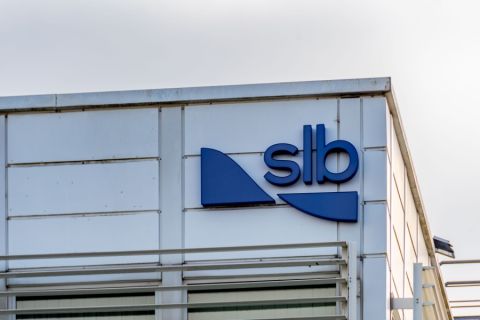
?Southwestern Energy Co. president Steve Mueller stood before 800 attendees at Hart Energy’s Developing Unconventional Gas conference in Fort Worth in early April and told the crowd, “It may look like the Fayetteville is getting mature and that we’ve learned all that we need to learn.” But, he emphasized, “that’s not what has happened, and that’s very important.”
That clarification is especially important to the Houston-based gas producer, which is heavily vested in the Fayetteville shale play. In fact, Southwestern is the only company for which the play is its majority holding—some 70% of proved booked reserves.
When Mueller commented on misperceived maturity in the Fayetteville, he was referencing the company’s projections years into the future for securing and building take-away capacity. Yet that very sentiment of maturity may be gaining traction on Wall Street.
Is the Fayetteville shale near maturity?
The answer determines whether investors believe there remains any upside potential in the stock valuations of companies operating in the play, and perception may trump reality. If investors answer yes, then their money could migrate to companies pursuing other seemingly boundless emerging plays.
The Fayetteville, spanning approximately 125 miles across the northern region of Arkansas, is predominantly locked up by four operators—Southwestern, Chesapeake Energy Corp., Petrohawk Energy Corp. and XTO Energy Corp. None is more vested in the play’s success than Southwestern.
2P or Not 2P?
Subash Chandra, an analyst with New-York based Jefferies & Co., is clear in his view that perceived investor disinterest in the Fayetteville is premature. “We’re not making the call to get out of the Fayetteville shale because it’s maturing,” he says.
Yet he does observe a trend in investor reaction to plays that have progressed ahead of the Fayetteville: the Powder River, Piceance, Pinedale and Barnett. All of those areas, he says, have achieved a notion of maturity in the minds of investors, signified by the fact that the companies in these plays are only getting credit in their stock valuations for proved reserves.
“Their 2P (proved plus probable) reserves quit growing at a rate that investors wanted to see.” He says Jefferies tracks stock valuations, and if a company doesn’t reflect much in the way of probable reserves, “it means something is going on.” Because, he suggests, “if the future were all blue skies with no finite limit, then you would pay for a lot of probables.”
Such is the case with present valuations of Marcellus, Haynesville and Eagle Ford shale operators—and Fayetteville companies, too, he notes. But following the trend of drilling activity in resource plays, the Fayetteville is “the next logical candidate” in line to see investor interest cool.
Take, for example, Ultra Petroleum Corp., whose primary focus is in the Pinedale Anticline. Ultra still has “years and years of growth,” says Chandra, but the stock is cheaper today than at any time in the past eight years. Its drilling opportunities in the play abound and operational maturities are “nowhere in sight.” So why doesn’t it get probables credit like it used to?
“You have to show your core area is growing,” he says. “If it is, then your probables will continue to grow—lack of growth definition excites the imagination. It is as soon as your opportunities become finite that you begin to lose your appeal and the Street withdraws those probables.”
As with Ultra, stock valuations of Powder River and Piceance operators have plateaued as the limits of these plays come into focus. Companies with Barnett positions are facing a slowdown in valuation momentum as well, he suggests. “These companies are generally selling for their proved reserves and there is not a huge probable contingent in it.” Value for probables comes down to investor sentiment.
This trend persists in spite of early developmental maturity and in the face of frustration of operators peering ahead at years of running room. From an operational perspective, the Pinedale, Powder River, Piceance and Barnett shales have many years of drilling remaining, but “the problem is the market sometimes doesn’t care.”
Operators can reduce costs, increase initial production rates and downspace, but investor sentiment may change regardless. “It’s a riddle. That’s very frustrating for the operator. Probables shouldn’t be taken for granted, because they come and go.” The only real remedy for this malady, he says, is to give investors a dose of a new emerging play in the portfolio.
Chandra says the Fayetteville is as good as any play in some respects, and generally is close to the top-three Haynesville, Marcellus and Barnett plays in many other regards. But no other company in the play has made it a dominant growth asset as has Southwestern, which is not covered by Jefferies.
“They are the exception. Southwestern is doing the best with the most. They’re so far ahead of the curve. They were the first there and got a head start on everybody, and they’re given tremendous value for the Fayetteville.”
Tom Gardner, director with Simmons & Co. International, is optimistic the Street will continue to recognize the valuation upside potential in Fayetteville-vested stocks. Should the Fayetteville be treated as old news in investors’ minds? “Not at all,” he says.
“Valuations of companies in the Fayetteville will likely continue to be helped quite a bit by value accretion.” The question, he suggests, is where will the valuation uplift stop?
In its valuation models for the play, Simmons & Co. gives credit for just 60% of acreage held, so “in that sense there is still quite a ways to go,” says Gardner. “There will be significant valuation uplift there.”
As companies continue to drill out the play, he says chances are that most of the acreage will be proven productive and derisked as it is delineated. What will that number ultimately be? “It could be 80% or even much higher.”
Another indicator of valuation upside is the “stunning” efficiency gains over the past year or so that he characterizes as “remarkable” and not yet fully included in the model. Chesapeake, for example, announced its last 30 completed wells there have shown a 30% increase over its targeted 2.2 billion cubic feet per well of estimated recovery, and Southwestern has shown quarter-over-quarter initial rate increases since 2007 and ongoing.
“The efficiency gains that are happening right now are not yet baked into the model. All these things add up.”
In the past 12 months fracture stimulations in the play have increased from 1 million pounds of proppant pumped to 4 million pounds or more, resulting in higher initial flow rates, and higher initial rates generally equate to larger reserves down the line.
“That doesn’t sound to me like things are standing still,” Gardner says. “You’ve got a truckload of various measures that will continue to create value for shareholders of companies operating in the Fayetteville that are not currently in the valuation.”
Southwestern, the Fayetteville’s “marquee” company and a stock that is covered by Simmons, is clearly being treated well because it’s in the play, he says. “The fact that they have Fayetteville assets is not hurting their valuation at all.”
With the company presently trading at just above $40 per share, Simmons places Southwestern’s net asset value (NAV) at $49 per share, in spite of giving it only 60% credit for Fayetteville acreage. “So there is upside in our NAV, and this valuation is on the current (price) strip, which is well below marginal costs.”
Southwestern’s NAV in Simmons’ model would be $51 at $7 gas, and $65 at $8 gas. “And efficiency improvements and cost savings are not baked into our numbers,” Gardner says.
The other companies holding significant Fayetteville positions—Chesapeake, Petrohawk and XTO—suggest that “smart” money is chasing the play. “Some pretty smart folks think the Fayetteville is a good place to play.”
While some investors might chase the romance of the next emerging play, Gardner believes that notion is short-sighted.
“We don’t think it’s rolling over,” he says. “In investing, it’s always a question of when is the optimum time to exit. With respect to the Fayetteville, it’s too early. The low-risk valuation upside is not fully reflected in the equities of the players in this play.”
First and Foremost
“I haven’t heard any investors say that it was over or that we know everything,” Southwestern’s Mueller says. “Our stock has done very well over the last couple of years. We haven’t seen an exodus, or anyone saying there’s no value left and moving somewhere else. Obviously, there’s upside left.”
The Fayetteville’s discoverer and predominant operator believes the Arkansas play is in early days of development as well as shareholder value. Reports of its valuation demise are highly exaggerated.
“Certainly it’s maturing,” Mueller says, “in the sense that we’re moving up the learning curve—we learn something new every day. But we’re not doing anything that’s true development right now. True development is still a couple of years away.”
Southwestern holds some 875,000 acres in the Fayetteville, more than any other company. Its roughly 1.5 trillion cubic feet of proved booked reserves represents 70% of the company’s holdings. And while it is still early in the play’s life cycle, the company is just beginning to enter the reserve-booking phase. Southwestern will drill 600 wells in the play in 2009, using 200 to hold acreage and 400 to test infill spacing. The company continues to drive hard up the learning curve to reach development mode.
Two years ago investors were asking if the Fayetteville would be economic. “Today, it’s a given that the play is economic.” Now, he says, the overriding question is, “How economic can you make it?”
Southwestern is pushing the limits to find that answer. Many technological hurdles have been mastered, including settling on slickwater over crosslinked gels for fracturing, although it is still experimenting with the right mix of sand and water. Lateral lengths will average between 4,000 and 5,000 feet, and perforations are down to 75 feet apart. Those could narrow to as close as 50 feet or 25 feet, depending on continuing tests.
“We’ve come a long way,” says Mueller, “but most of what we are doing is learning, not growing production.” The company has yet to see a plateau in initial rates. “We haven’t seen that breakover yet where we’re getting less bang for the buck on production.”
In the past year, the per-well estimated ultimate recovery has increased from less than 2 billion cubic feet to more than 3 billion.
Drilling times are falling as well, from an average 14 days to total depth last year to 11 days in 2009. “When we get to development mode we’ll have that down to under 10 days.” Southwestern drilled four wells in 29 days from a single pad recently, averaging just over seven days per well.
Compared with a conventional play that can reach development mode after five to 10 wells, shale plays take hundreds or thousands of wells drilled before reaching development stage. “The key is how fast you can learn.”
Maturity within Southwestern’s Fayetteville holdings varies as well. Mueller says maturity is high in pilot areas where testing has been concentrated. However, as the company tests deeper or expands east or west, there is much more to learn.
Investors do factor in operational efficiencies, he contends. As the company explores 50-acre spacing instead of 100-acre spacing, for instance, they must consider that the total amount of capital required will double. “What you get for doubling that capital makes a huge difference in how investors perceive it,” he says. “It’s important to them.”
In early 2006 Southwestern’s gross production was about 10 million cubic feet a day out of the play. Today it is flowing 850 million daily gross, with a target of 2 billion per day by 2012. He says the company will move past the 1 billion marker some time this year.
Can the company maintain that production curve?
“If gas prices are such that we want to continue drilling at the pace we’re drilling, then we can continue at a steep incline for several years.” On a pace of 600 wells per year, every investor can be confident that in five years Southwestern will have significantly more production, more reserves, and 10 years more of drilling in the Fayetteville alone, he says.
“That’s why investors invest in us—they can see a bright future. This is a world-class play and there are plenty of reasons to invest in the Fayetteville. There’s no doubt about that.”
Simmons & Co.’s Gardner agrees. He believes that anyone who says the Fayetteville is done may be missing an opportunity for a relatively low-risk investment.
“Are there some who are going to believe it’s over and it is time to move on? Certainly. Do I think that’s the right approach? Certainly not. Those who have taken that bet will likely not be well served.”
Recommended Reading
No Good Vibrations: Neo Oiltools’ Solution to Vibrational Drilling Problems
2024-09-10 - Vibrations cause plenty of costly issues when drilling downhole, but Neo Oiltool’s NeoTork combats these issues, enhancing efficiency and reducing costs.
Adionics Unveils Lithium Extraction Technology For Recycled Batteries
2024-09-09 - The Paris-based company said its liquid-liquid process achieved lithium recoveries of up to 98% across a range of brine concentrations.
SLB Launches New GenAI Platform Lumi
2024-09-17 - Lumi’s machine learning capabilities will be used to enhance SLB’s Delfi digital platform offering for better automation and operational efficiencies.
New Texas 30-MW Data Center Begins Construction
2024-11-11 - Dataprana’s 30-megawatt data center in La Marque, Texas will help satiate the growing demand for cloud services, Web3 applications and digital asset mining.
Range Confirms: Data Center Talk Underway for Marcellus Gas-fired Power
2024-10-24 - Deals will take a while, however, as these multi-gigawatt agreements are also multi-decade investments, said Range Resources CFO Mark Scucci.
Comments
Add new comment
This conversation is moderated according to Hart Energy community rules. Please read the rules before joining the discussion. If you’re experiencing any technical problems, please contact our customer care team.





